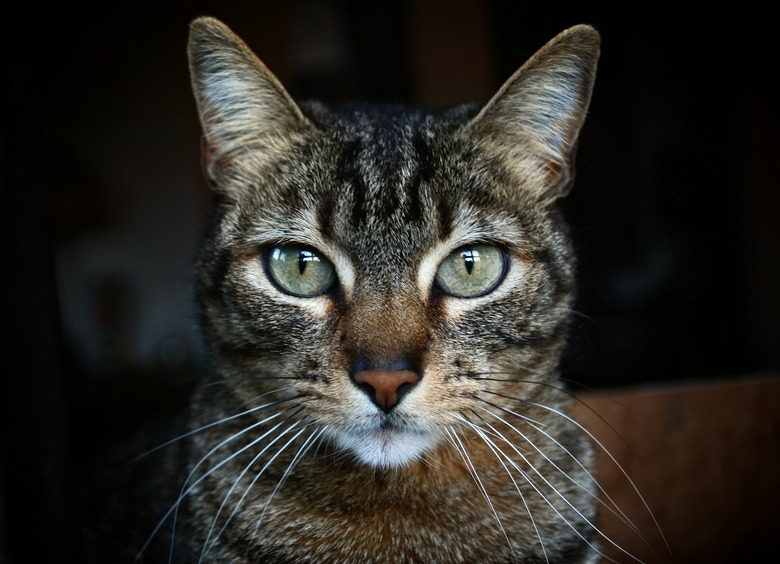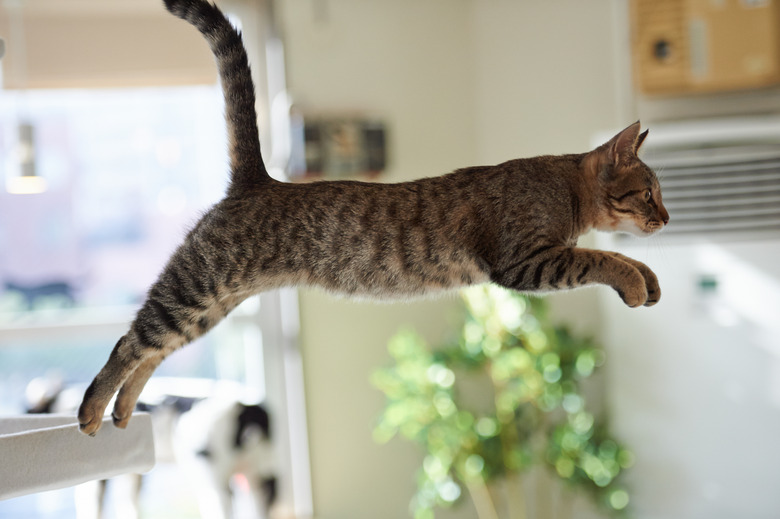Facts About Tabby Cats
Tabby cat patterns are some of the prettiest among felines. Striped, spotted, or even with patches, tabby cat coat patterns also span a wide range of colors, such as golden brown or reddish, gray, silver, and even blue among other gorgeous shades. Contrary to popular belief, the tabby is not a breed; it's a pattern on the fur of many types of cats. Whether you own a chocolate tabby cat or a tabby cat mixed with another breed's look and personality, owning a pet cat is truly a joy. If you have questions about tabby cat care, your vet can point you toward the right food, toys, and treats.
What are tabby cats?
What are tabby cats?
A tabby isn't a breed on its own, like the Siamese, Bengal, or Siberian. Instead, a tabby cat is one with tabby fur, which can come in many guises. Tabby cat colors and patterns are varied, with either stripes, swirls, or spots plus a telltale "M" on the front of the cat's face.
As for the history of the tabby cat, it's believed this animal has African roots since the coat looks very similar to a related cat in this region. The tabby's distinctive fur design may have started with the mackerel pattern in ancient cats, which has narrow stripes that run along the sides of the body.
Tabby cat coat patterns
Tabby cat coat patterns
There are five main tabby coat patterns:
- Classic tabby: If you spot a swirling, targetlike shape on the side of a cat, this kitty is a classic tabby. This coat pattern is also sometimes called a blotched tabby since the whorls look like blotches.
- Mackerel tabby: This feline has a fishy name, but the mackerel pattern refers to more of a raccoonlike design on the fur. Look for rings around the tail and stripes (solid or broken) on the body.
- Spotted: Just as it sounds, a spotted tabby sports spots of varying sizes. This tabby type may appear similar to the mackerel tabby, as broken stripes and spots look alike.
- Patched: This tabby cat coat pattern has patches in different colors on the fur, whether dark brown or grayish-brown or reddish-orange. A patched tabby may be called a tortoiseshell tabby, as the mixture of brown and orange spots looks like the shell of a tortoise.
- Ticked tabby cat: The ticked type still sports that big M on the front of the face, but the rest of the stripes are very faintly painted on the fur. Instead, you might spy bands of different colors on this cat, who's also sometimes called an Abyssinian tabby.
Breeds with tabby cat patterns
Breeds with tabby cat patterns
Many different breeds proudly feature a tabby coat, which means you have your pick of a variety of looks, sizes, personalities, and more. Some of the more common breeds with tabby fur include:
- Abyssinian: Hailing from the region where Ethiopia is located today, Abyssinians are an active breed with large but delicate ears and a short, dense coat.
- Maine coon: There's a reason a lot of Maine coons are called "Fluffy." This well-known mouser is an excellent family cat who is very popular in the Northeastern United States thanks to thick fur.
- American shorthair: This kitty has a real pedigree, as it's believed the original cats were brought over on the Mayflower and similar ships. Smart and loving, these cats can sit quietly for hours, but they're also very interested in hunting small prey, like mice and birds.
- Oriental: There are more than 100 varieties of the Oriental cat, though his telltale sizable ears often give him away. Orientals do best with another cat in the house to keep him in line and entertained.
- Domestic shorthair: You may have had this kitty as a child since the domestic shorthair is the most common type of pet cat. The domestic isn't a separate breed but rather a huge quantity of mixed breeds in one group. Healthy and happy, over 80 million of these types are found in the US.

